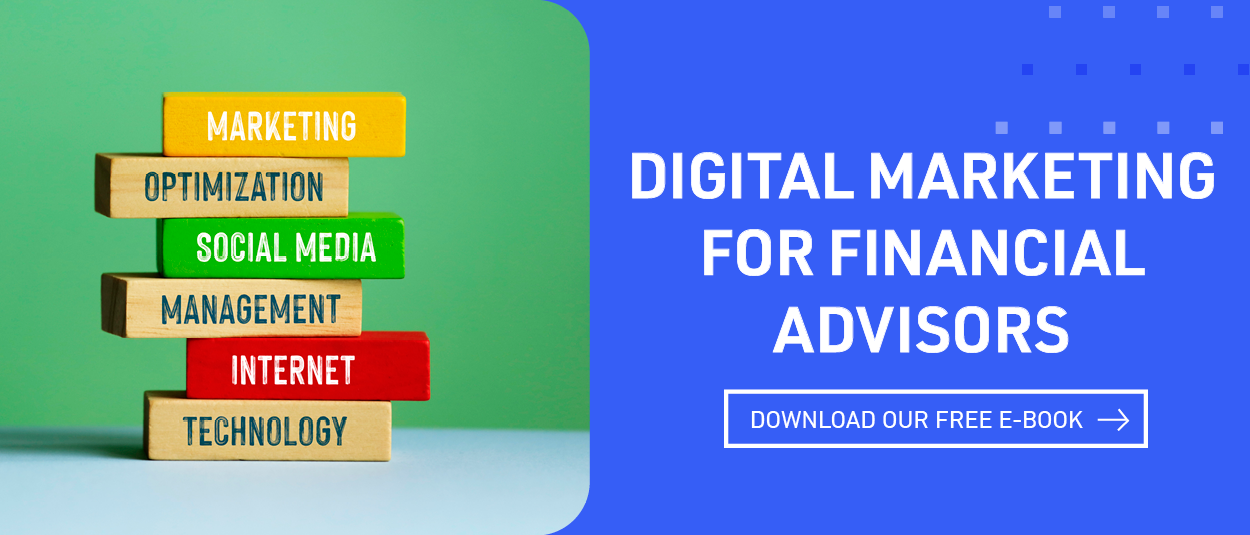Why Financial Advisors Will Continue To Expand Their Use of Digital Marketing After The Pandemic
Let’s create a distinction between the ways financial advisors use virtual and digital marketing.
The word “virtual” describes how financial advisors interact with investors who are leads, prospects, and clients. Virtual encompasses all forms of communication except face-to-face. For example, virtual could be the telephone, email, Zoom, and other means of connecting without being in the same room.
Digital marketing describes how financial advisors use the Internet to generate prospects for their firm’s services. This can include content marketing (blog articles, pillar pages), social media, local SEO, and drip emails.
Brick & Mortar Marketing
Are the days of brick & mortar marketing over? It is highly unlikely that all investors will embrace virtual relationships with their advisors. As the risk of getting Covid continues to decrease an unknown percentage of investors will revert back to brick & mortar relationships.
It also stands to reason an equally unknown percentage of investors will continue to make virtual their preferred method of contact. These are the same investors who will use the Internet to find, research, select, and track the results of their advisors. They may be younger, more Internet savvy, or they just appreciate the convenience of virtual relationships.
Therefore, financial advisors have to be prepared to offer prospective clients a choice. Do they prefer virtual or face-to-face relationships with their financial advisors? And, the investors who prefer virtual will be reachable using digital marketing. The common denominator for virtual interactions and digital marketing is the Internet.
So, brick & mortar marketing is not dead, but advisors will have to be prepared to use face-to-face and digital marketing to initiate contact with more investors that have divergent preferences.
Why Digital Marketing Works
Virtual relationships occur after financial advisors use digital marketing to produce leads. If there are no leads, there are no virtual interactions.
Digital marketing works because it fits how people use the Internet to find services, products, and information. Financial advisors do not have to teach them how to use the Internet. Multiple generations of investors are very adept at finding what they are looking for. You just have to make sure they find you. And, therein lies the challenge for digital marketing.
People enter keywords in search engines to find what they are looking for - financial advisors, information about financial advisors, or general financial information. The most valuable space in the search engine is page one. That’s because Google tells us 91.5% of its users do not scroll to page two. Only 4.8% scroll to page two and 1.1% scroll to page three.
It makes sense that financial advisors harness the power of the Internet to make it easy for investors to find them.
The Power of the Internet
Investors’ use of the Internet will increase exponentially over time as new technologies and services make it easier and faster to find, research, and contact financial advisors.
But, easier and faster are not the only reasons why more investors will use the Internet for these applications. Perhaps the most important reason is control over the process they use to select advisors. For example, they can learn a lot about advisors and maintain their anonymity at the same time. They know you, but you don’t know them until they want to schedule interviews. Control means they determine who they contact and when they initiate the contact.
Therefore, what they see on the Internet is of critical importance.
Digital Marketing Strategies
There are multiple strategies that must be employed to optimize the productivity of digital marketing.
Step one is the right type of website. Most financial advisors treat their websites like online sales brochures. This is a missed marketing opportunity. Websites should be lead generation machines. For example, even lower quality websites should convert 2% of visitors into qualified leads. 100 visitors per month means two leads. 1,000 visitors per month means 20 leads. This represents two opportunities for financial advisors. Increase the number of visitors and their websites’ conversion rates. Some advisor websites convert in the 5% to 10% range.
Step two is Internet visibility. Investors have to be able to find financial advisors in order to contact them. Content marketing, pillar pages, social media, and local SEO are all strategies that increase financial advisor visibility on the Internet.
Step three is not just repurposing existing content. It has to meet all of Google’s rules for high-quality content that is actually opened and read by investors.
Step four is reaching the right types of investors. For example, a financial advisor specializes in working with pre-retirees. Therefore, the financial advisor’s digital marketing strategy is designed to reach these future retirees by producing content that is important to them.
Step five is to make sure the content is of sufficient quality that investors will actually open and read it. Google is not inclined to give advisors SEO credit for content that no one reads. The higher the quality of content, the more visible it will be in the major search engines.
Competitive Advantage
According to Google, investors will visit an average of six financial advisor websites when they use the Internet to find and research financial advisors.
There are several strategies for producing visitors for financial advisor websites. Once the visitors are on the websites, the websites have two to three minutes to convert them into qualified leads. That is not a lot of time to convince visitors your firm should be included in their interview processes.
It makes perfect sense that when investors visit financial advisor websites, what they see has to be competitive with the other websites they are visiting. This means smaller firms have to compete with bigger firms. Navigation has to be intuitive so they find the information they are seeking quickly and easily. The websites have to deliver the information investors are seeking. The content should be more about benefits than features.
Leads Versus Contacts
It is important to note digital marketing for financial advisors will deliver leads and contacts. A lead is an investor who has an immediate need for a financial advisor. They are using the Internet to find and research advisors before they contact them to schedule interviews.
An equally important part of digital marketing for financial advisors is the production of contacts. A contact is an investor who is seeking one or more types of information. First, they may have heard of a firm and are using the Internet to research it. In this case, they enter the firm’s name in a search engine to learn more. Second, they may be seeking general financial information.
Some financial advisors do not put a lot of value on contacts. That is a big mistake. Consider the investor who is using the Internet to learn more about financial advisors because they retire in a few months and transfer $2 million from a 401k to an IRA. They may not have the immediacy of a lead, but they may represent a much bigger revenue opportunity. Therefore, financial advisors should have robust drip email systems to stay in touch until the investor is ready to schedule an interview. Building a substantial queue of contacts will fuel the growth of financial advisors in future months.


